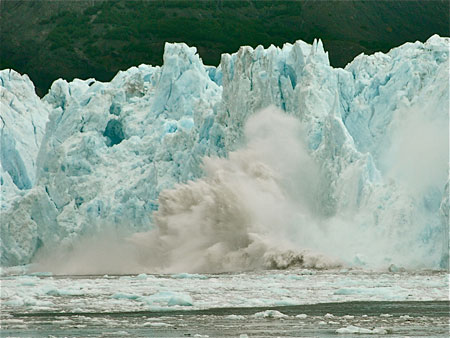Seismicity, Seawater and Seasonality:
New Insights into Iceberg Calving from Yahtse Glacier, Alaska
By:
Tim Bartholomaus
UTIG
| When: | Friday, February 7, 2014, 10:30 a.m. to 11:30 a.m. Join us for coffee beginning at 10:00 a.m. |
| Where: | Seminar Conference Room, 10100 Burnet Road, Bldg 196-ROC, Austin, Texas 78758 |
| Host: | Joe MacGregor, UTIG |
Click for a Live Broadcast.

Abstract
Glaciers that end in the ocean lose mass at their termini through iceberg calving and submarine ocean melting, as well as by melting at their top surfaces that is common to all glaciers. Iceberg calving and submarine melting are major, rapidly changing components of the mass loss of many glaciers worldwide.
Yet, the mechanisms and factors that control calving and submarine melt are poorly understood. In large part, this uncertainty stems from the challenges of making high temporal resolution measurements and working in these extremely dynamic environments. In this seminar, I draw on methods from seismology and oceanography to identify the magnitudes and variability of submarine melt and iceberg calving at Yahtse Glacier, a tidewater glacier in southern Alaska. I will show how cavitation of icebergs beneath the sea surface can generate "icequakes" that are recorded by seismometers 100s of km distant.
Time series of calving-generated icequakes show that calving varies seasonally, as well as in response to ocean tides. I find that the submarine portion of the glacier terminus can melt at over 10 m/d during much of the year. These results demonstrate how essential the ocean can be to the dynamics of tidewater glaciers.




